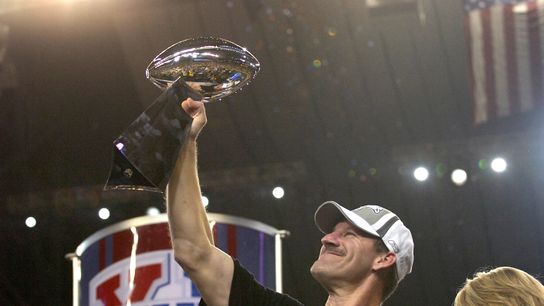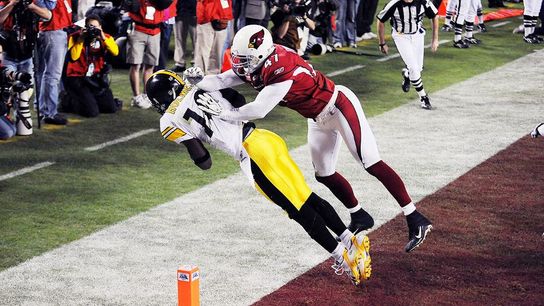The Pittsburgh Steelers are one of the most storied franchises in NFL history, known for their tough, blue-collar mentality and a legacy of success. With six Super Bowl titles and a reputation for resilience, the Steelers have carved out a place among the league’s elite. However, it’s the underdog victories — those unexpected, thrilling moments where the odds were stacked against them — that have truly defined the team’s identity. These wins are not just about the outcome, but about the heart, determination, and drive to prove doubters wrong.

Al Messerschmidt / Getty Images
For those looking for a similar underdog story, exploring the best Minnesota online casino sites can offer an exciting and unpredictable journey, where players can find opportunities to defy the odds. Just like the Steelers’ unexpected victories, these online casinos bring the thrill of surprise and victory to those who dare to take a chance.
In this article, we’ll take a closer look at some of the Steelers' biggest underdog wins, from unforgettable playoff victories to Super Bowl triumphs, highlighting the moments that cemented their place in NFL history and showcased their never-give-up spirit.
What Makes an Underdog Win Special?
An underdog win in sports occurs when a team, perceived as less skilled or less likely to succeed, triumphs against a more favored opponent. These victories are special because they defy expectations, showcasing resilience, strategy, and heart over conventional predictions. For fans, underdog wins are deeply resonant because they represent hope and the belief that anything is possible, no matter the odds. They contribute to a team’s identity by highlighting its perseverance, unity, and ability to overcome adversity. Such wins also create unforgettable moments, solidifying a connection between the team and its supporters, who take pride in the underdog narrative and the sense of achievement that comes with proving doubters wrong.
The 2005 AFC Championship Game vs. Denver Broncos (2005)
The 2005 AFC Championship Game between the Pittsburgh Steelers and the Denver Broncos is a quintessential underdog victory. The Steelers entered the postseason as a Wild Card team, having scraped through the regular season with a 11-5 record. Facing the top-seeded Broncos in Denver, few gave the Steelers a chance. Yet, Pittsburgh defied the odds with a 34-17 victory, a result driven by key moments and standout performances.
Quarterback Ben Roethlisberger managed crucial plays, while the defense, led by Troy Polamalu, made key stops throughout the game. The victory also showcased the leadership of Head Coach Bill Cowher, who had battled through numerous playoff disappointments.
This win propelled the Steelers into Super Bowl XL, where they would go on to defeat the Seattle Seahawks, claiming their fifth Super Bowl title. The 2005 AFC Championship Game solidified Pittsburgh’s underdog narrative, emphasizing their resilience and proving that they could compete with the NFL’s elite.
Super Bowl XLIII vs. Arizona Cardinals (2009)
Super Bowl XLIII, held in 2009, pitted the Pittsburgh Steelers against the Arizona Cardinals in a thrilling underdog victory. The Steelers entered the game as slight favorites, but the Cardinals had a potent offense led by quarterback Kurt Warner and wide receiver Larry Fitzgerald, making them formidable opponents. Despite the Steelers' strong defense, many experts considered Arizona’s offensive capabilities a serious challenge.
The game was a back-and-forth battle, with Pittsburgh initially leading, but the Cardinals rallying late. The most iconic moment came with less than a minute left, when Ben Roethlisberger connected with wide receiver Santonio Holmes for a stunning touchdown in the corner of the end zone. Holmes’ immaculate catch, balancing on the edge of the sideline, secured the Steelers' 27-23 victory.

Kirby Lee / USA TODAY Sports
Santonio Holmes' Super Bowl XLIII catch is one of the greatest moments in Super Bowl history.
This win gave the Steelers their sixth Super Bowl title, further solidifying their place among the NFL’s elite teams. The victory marked Roethlisberger’s second Super Bowl win and proved the Steelers’ ability to overcome adversity, securing their legacy as a resilient, championship-caliber team. Super Bowl XLIII not only crowned them as champions, but cemented their dominance in the league’s history.
The 1974 AFC Championship Game vs. Oakland Raiders (1974)
The 1974 AFC Championship Game between the Pittsburgh Steelers and the Oakland Raiders marked a pivotal moment in NFL history. The Steelers, although a rising team under Head Coach Chuck Noll, were considered underdogs against the heavily favored Raiders, led by their tough defense and future Hall of Fame quarterback, Ken Stabler. The Raiders had a storied history and were favorites to win the AFC title that year, but the Steelers’ defense, the "Steel Curtain," was beginning to make its mark.
The game itself was hard-fought, with a tense back-and-forth battle. The Steelers' defense came up big, with crucial plays like safety Mike Wagner's interception and a strong performance from linebacker Jack Ham. The Steelers’ offense, led by Terry Bradshaw, also stepped up, with Bradshaw throwing key passes and managing the game well under pressure. The Steelers won 24-13, earning their first-ever AFC Championship and a ticket to Super Bowl IX.
This victory was significant in solidifying the Steelers’ rise to dominance in the 1970s. It marked the beginning of their championship era, with the win laying the foundation for four Super Bowl titles in six years, transforming the team into a dynasty and forever changing the landscape of the NFL.
Conclusion
Underdog victories have been pivotal in shaping the Pittsburgh Steelers' identity, highlighting their resilience and ability to defy the odds. These moments not only fueled the passion of their fan base but also solidified the team’s legacy as one of the most formidable in NFL history. Each win, against all expectations, reinforced the Steelers' reputation for toughness, determination, and the never-give-up spirit that continues to define the franchise.



